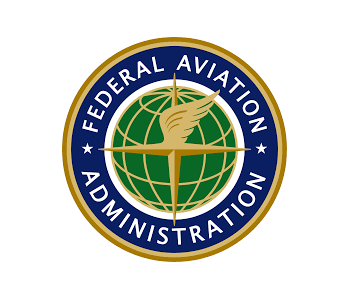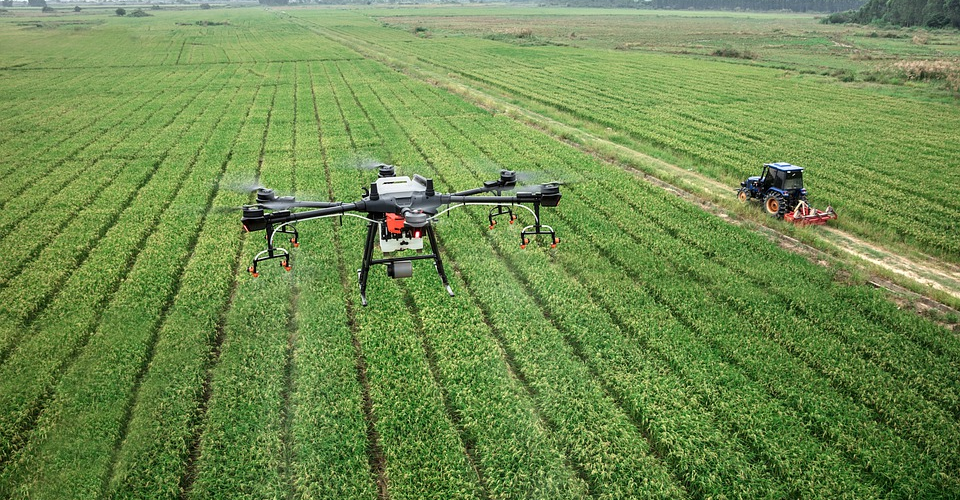What Does the FAA Classify as Commercial Drone Use?
With the constantly evolving technology of drones, numerous companies and industries have started to recognize how drones can help them improve the way things are done. From standalone drone entrepreneurs to multinational firms, more and more drones are being used to aid businesses and for other profit-generating activities.
However, there are a few things you’ll need to consider before you can use your drone to earn some cash. Since 2016, the FAA has enforced a set of regulations governing commercial drone use. But what is considered commercial drone use according to FAA rules? And what regulations do commercial drone pilots need to follow?

PART 107 Made Easy
- 161 Question and Answer Study Guide
- 105 pages of illustrated content
- Covers all parts of the Part 107 test
- $97 of value for free
How does the FAA define commercial drone use?

According to the FAA, commercial drones use refers to the use of a drone “in connection with a business.” This definition, though short and succinct, feels deliberately vague to encompass a wide range of drone activities.
Obviously, any type of drone service for which you receive a payment would bee considered commercial drone use. Typical examples include providing video coverage in weddings or selling of aerial photos. However, there may be times when a drone is used in aid of a business. These are also considered commercial drone use, even if they do not directly generate a profit. Typical examples include the use of aerial photographs in your company’s website, or the use of a drone to survey the land that you will be using to expand your business.
If you’re not careful, it’s quite easy to fall into the realm of commercial drone use unintentionally. You may find yourself in a situation where you start a flight mission for fun but end up slipping into commercial use. For instance, you may have taken those nice photos of the beach during your vacation for posting on your social feed. If a business comes up offering to buy your photo, you are only allowed to sell it if you have the appropriate license. Moreover, the photo you are about to sell must have been taken on a flight that complies to all commercial drone flight rules.
Examples of commercial drone use
As you can see, there are a couple of gray areas when it comes to determining which type of drone use is commercial or not. To help provide some clarity, here are some of the most common examples of commercial drone use.
1. Drone photography and filmmaking
By far the most accessible commercial drone application, drone photography, and filmmaking has become very common nowadays. Practically all weddings, sports events, or concerts are covered with some form of aerial photography. Filmmakers have also incorporated aerial filmmaking techniques into their repertoire, allowing for unique and highly dynamic shots.
Aside from providing on-site coverage, many drone photographers have taken to posting their galleries online and selling their photos. There are a bunch of websites out there that provide free and paid drone photos and videos. Since these photos are paid for and will likely be used by buyers for commercial designs and advertising, this type of drone use falls under the realm of commercial drone applications.
Even if a drone pilot does not receive any payment or compensation for their aerial photo, it can still be used in some form of publication or website that advances business interests. Effectively, the drone pilot is still liable under commercial drone rules in this situation.
2. Inspection
The fact that drones can fly to otherwise inaccessible areas and provide an unfettered 360-degree view from any vantage position makes them an excellent tool for inspection. Many industries have taken advantage of this capability – civil engineering, construction projects, roadworks, infrastructure, and utilities. Drones can even be equipped with more sophisticated sensors, such as thermal cameras, to conduct more advanced inspection jobs.
If you own a construction firm and you start using a drone to monitor that status of your ongoing jobs, then that is considered a commercial drone application even if it does not directly generate a profit. Another noteworthy example is the use of drones by insurance adjusters for building and roof inspection. Even if drone-aided inspection merely aids them in doing their job, it is still considered a commercial drone application.
3. Mapping
Drones are so uniquely suited to mapping that they have effectively revolutionized the way mapping professionals do their jobs. By using drones, mappers no longer need to take as many ground-level measurements. Finishing mapping jobs takes much less time and effort, and the data and the maps they can generate from drones are much more accurate.
Mapping services are typically requested by construction firms, real estate agents, technical firms, and urban planners. These services are paid and massively aid the conduct of business, naturally making them an example of a commercial drone application. A drone-based mapping service can be very easily classified under commercial drone use for the mere fact that it isn’t exactly something that people do for fun.
4. Surveillance
The fact that drones can go anywhere and can be programmed to fly autonomously make them excellent tools for aerial surveillance. Businesses use drone-based surveillance as an added layer of security for their facilities. Drone surveillance has also been explored by law enforcement and military, especially in places where there is a clear danger for their personnel. Both these examples fall under commercial drone use.
Of course, drone-based surveillance isn’t something people should be doing for fun. That would be bordering on illegal.
5. Precision agriculture
One of the more unusual but very useful commercial applications of drones is precision agriculture. This relies on special drone-mounted sensors that can capture images outside of visible light. The data collected by these sensors can then be used to create maps for crop health assessment. With such maps, farmers can identify problem areas and reallocate resources as needed.
Precision agriculture is pretty much an offshoot of drone mapping since it’s also a remote sensing method that generates geotagged data. Similarly, precision agriculture is considered a commercial drone application since it can influence farm management and crop quality improvement.
There are a couple of other applications of drone technology that are considered commercial, such as parcel delivery and firefighting. These aren’t quite as common as the five we have listed above. What’s worth remembering is the fact that there several tricky situations which can be considered as commercial drone use, even if it’s not obvious. Just be wary of such situations, and make sure you have the proper certification.
What are the FAA regulations for commercial drone use?

If you are determined to use your drone for commercial applications, then you have two options: get a Section 333 exemption or a Part 107 license.
The Section 333 exemption was the original commercial drone license. Getting this license is a long and tedious process that requires you to have a certified pilot license and an FAA-issued medical certificate. It didn’t make it easy for drone pilots to get commercial drone jobs, prompting the FAA to come with a new standard.
The Part 107 certification requirements were first introduced in 2016 and are now the accepted standard for commercial drone flight. Getting a Part 107 license is relatively simple – you only need to comply with the qualifications, pass a Part 107 knowledge test, and get vetted by the TSA. It can still take between 1 to 2 months to get the license, but this is already a massive improvement to the Section 333 certification process.
Of course, getting the license is only half of the story. The FAA has several operation restrictions and flight rules for Part 107 licensed pilots, including not being able to fly at night, over people, from a moving vehicle, and beyond visual line-of-sight. We’ve written numerous articles about the Part 107 rules in the past, so check those out if you want a detailed discussion.
Final thoughts
The increasing popularity of drones, particularly in commercial applications, has made it necessary for the FAA to impose flight rules and restriction for drone pilots. These changes were made in a bid to keep the national airspace safe, especially at a time when enough drones are flying around to cause accidents or close calls with manned aircraft.
It’s easy to overstep the line between recreational and commercial drone use. Doing so puts you at risk of violating drone flight laws, which could result in undesired consequences. Always practice due diligence whenever you start a drone flight mission – define your objectives, stick to them, and recognize the rules that you need to follow.


